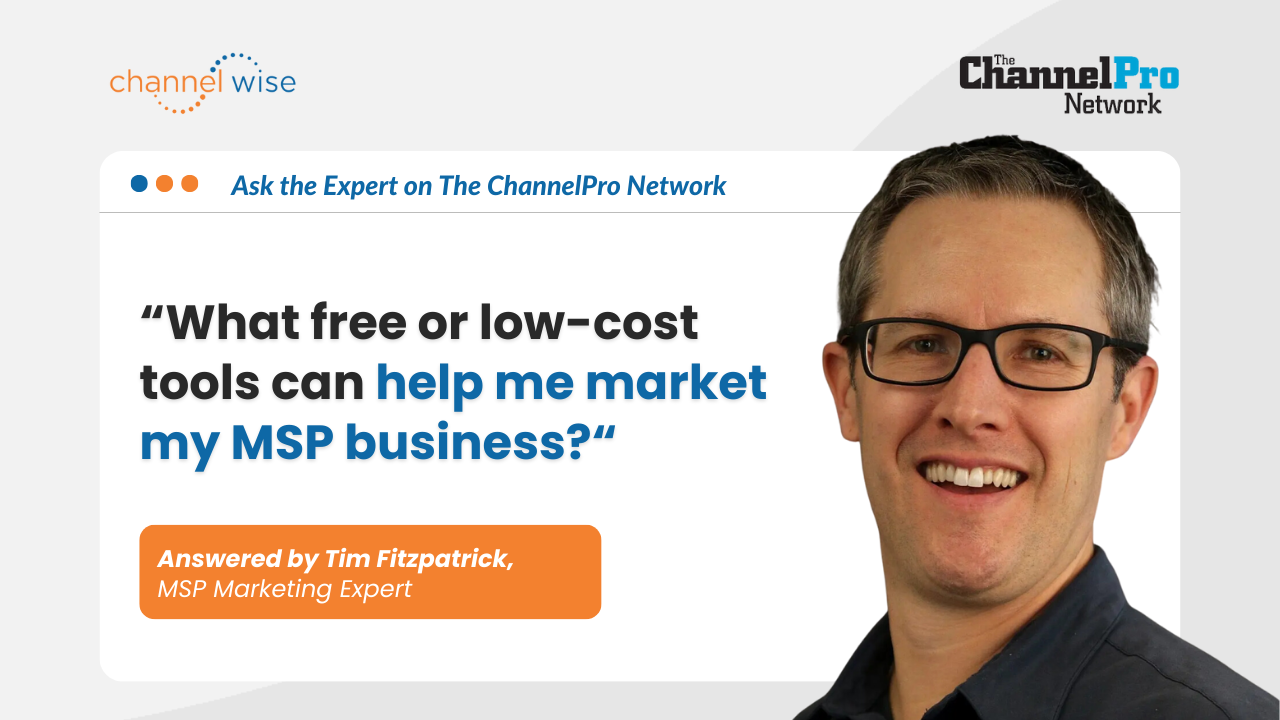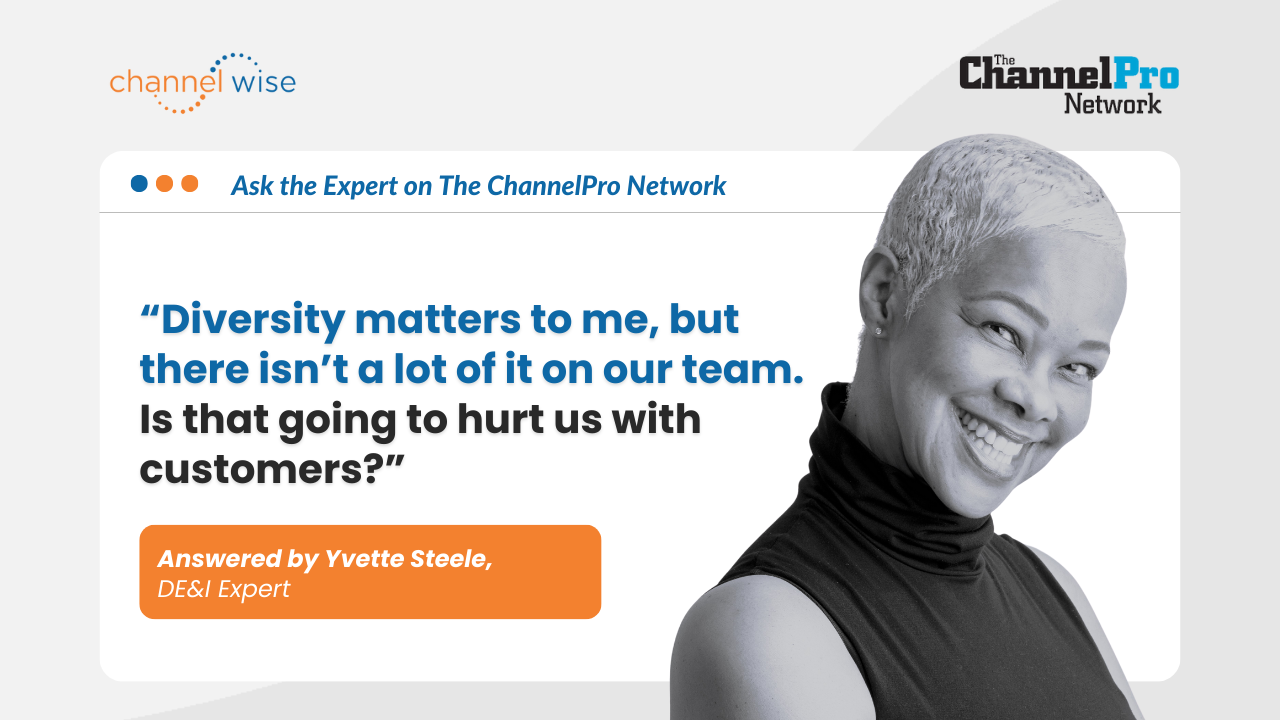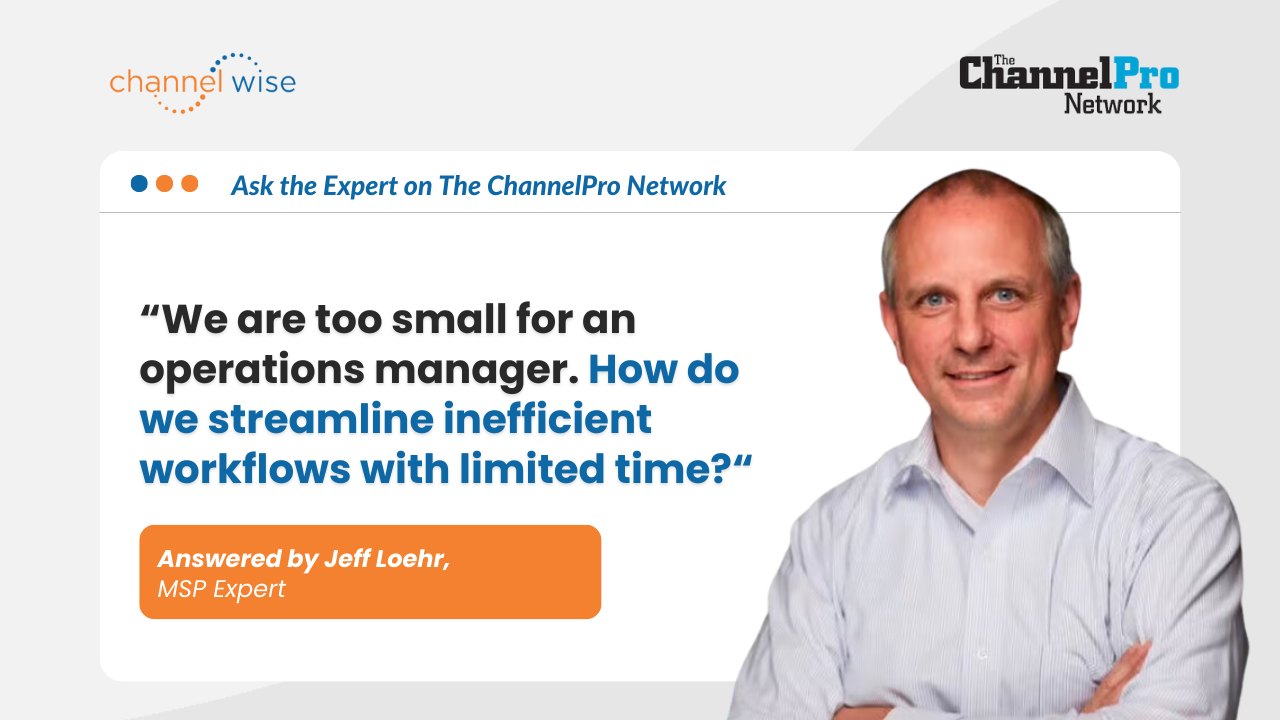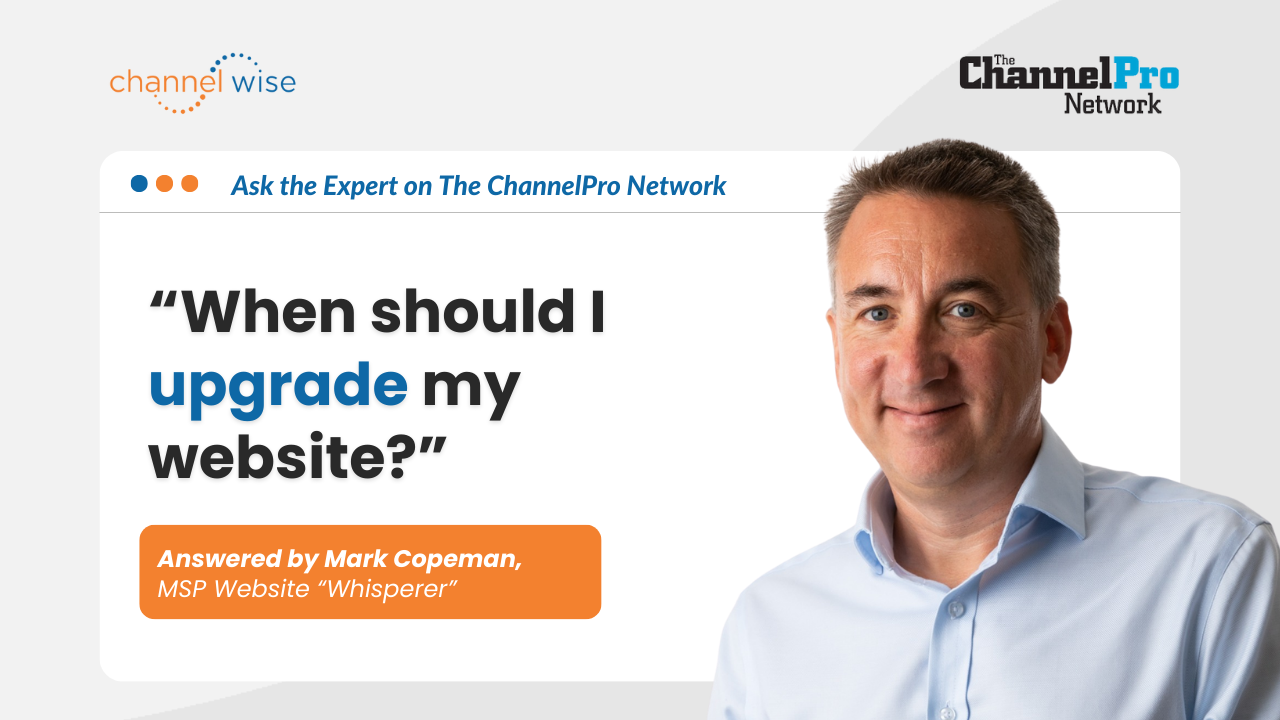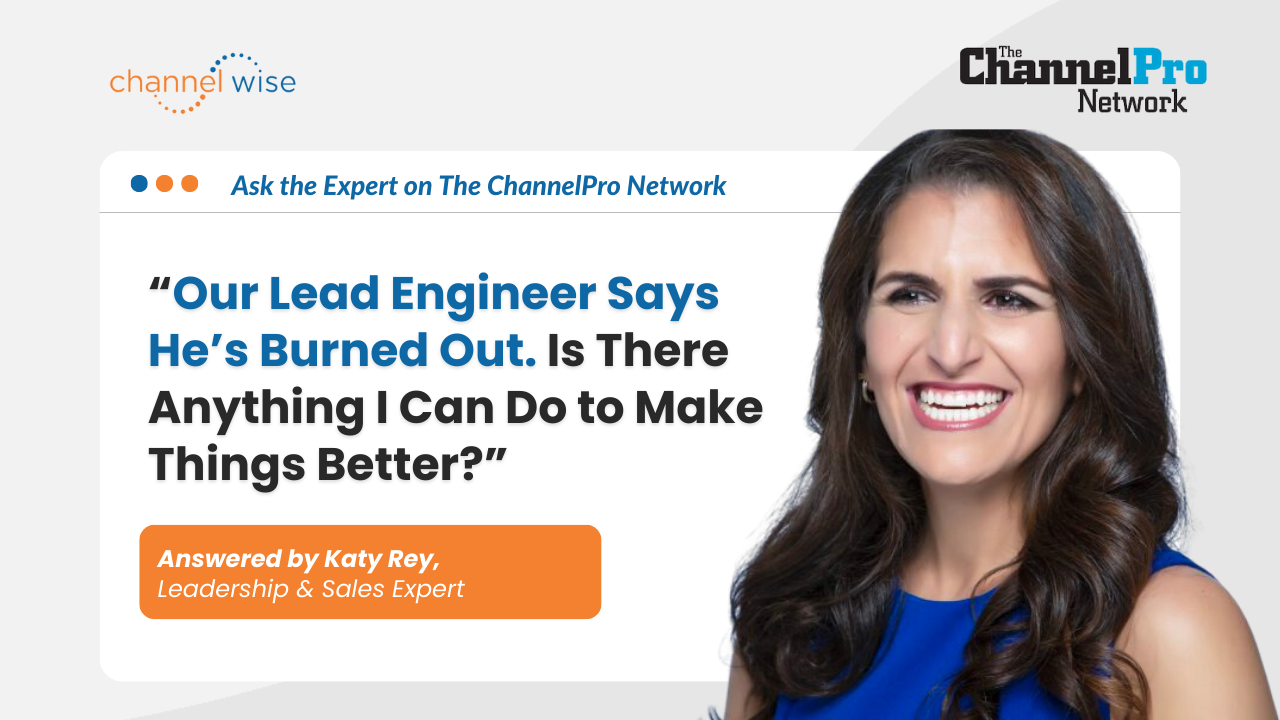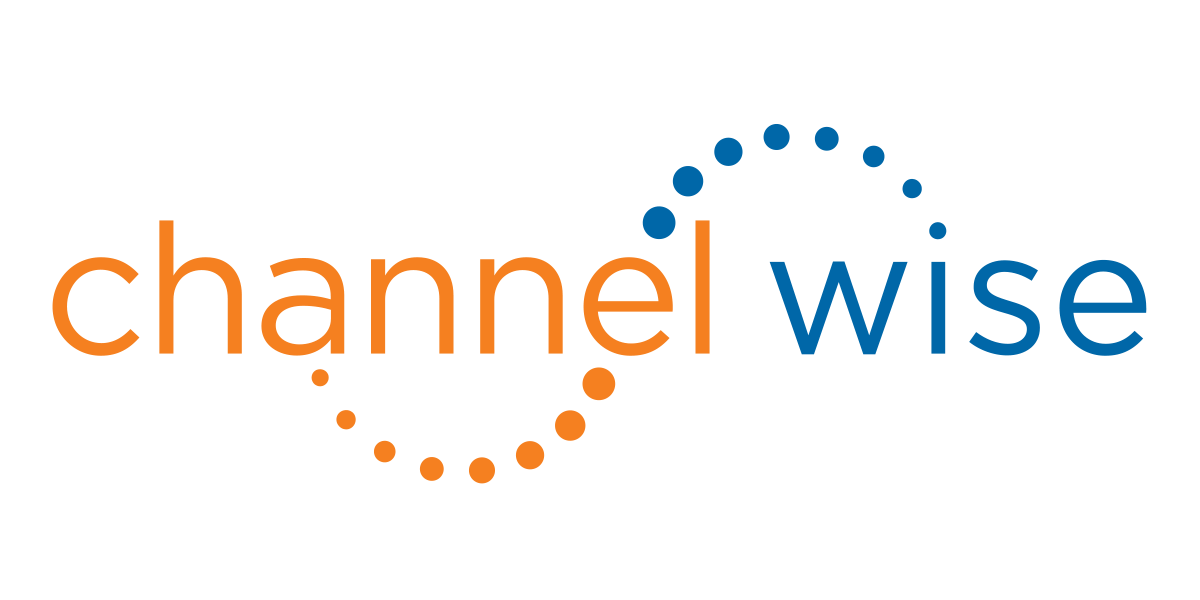Digital Marketing for Channel Partners: Key Insights from Tatiana Chamorro
Replay:
There are numerous strategies and techniques businesses can employ to boost their online presence and drive growth. However, navigating the complexities of digital marketing can be challenging, especially for channel partners and smaller businesses with limited resources.
In this episode of #AsktheExpert Live, Kathryn Rose, CEO & Founder of channelWise, interviewed
Tatiana Chamorro, a respected digital marketing expert and entrepreneur. Here, Tatiana shared valuable advice on various aspects of digital marketing, including formulating a strategy for channel partners, budgeting for brand awareness campaigns, the importance of a well-designed website, and more.
Highlights
- Focus on having a well-designed and informative website as the foundation of your digital marketing efforts.
- Formulate a digital marketing strategy based on the stage of your business and available resources.
- Key metrics for measuring the success of a brand awareness campaign include conversions, impressions, clicks, website search volume, and social media engagement.
What is your advice for formulating a digital marketing strategy for channel partners?
My advice would be first to identify and understand the stage of your business. It's important to recognize that investing in marketing can accelerate growth, but it's not always wise to aim for many leads if you're in the early stages. Consider your budget and determine what type of service you can afford. A marketing agency should ask about your budget to determine the appropriate advertising platform and potential return on investment. Additionally, assess if you have systems and processes to handle the leads generated through digital marketing. Without a nurturing system, it can be overwhelming to manage numerous leads without converting them effectively. Consider your business's stage and available resources when developing your digital marketing strategy.
How much should someone budget for a brand awareness campaign using paid media?
For a brand awareness campaign using paid media, I recommend setting aside around $1,500 per month. It's important to understand that brand awareness campaigns are focused on getting your brand recognized rather than generating immediate sales and return on investment.
It's also crucial to have a well-designed and user-friendly website that provides the necessary information to convert visitors into customers. Ensure your website is set up properly before allocating a budget to ensure that your campaigns are effective, whether focused on lead generation or brand awareness.
Why is it important for channel partners to have a well-designed and informative website?
It is crucial for channel partners to have a well-designed and informative website because it serves as the foundation of their digital marketing efforts. A website that lacks essential information or is difficult to navigate will cause visitors to lose interest and bounce out quickly. Just like in a conversation where someone zones out, if a website fails to provide the necessary information, visitors will navigate away. Therefore, having a strong website that includes details about the company, products, services, and ways to contact them is vital. It allows prospects to gather the information they need to make informed decisions about business with the channel partner.
How do you determine at what stage of the business to invest in different digital marketing strategies and which one to start with?
One way to determine the stage at which to invest in different digital marketing strategies is by looking at the revenue generated by the business annually. If the business is generating under $350,000, it is recommended to focus on brand awareness, ensuring a well-built website on platforms like WordPress, and organic marketing efforts such as attending events and networking. It is crucial to have a strong logo that effectively communicates the brand's message.
For businesses generating over $350,000 annually, it is advisable to explore different advertising platforms. The cost of advertising on these platforms varies, and the decision depends on where you want to advertise and the cost per click (CPC) in your industry and location. Reliable marketing agencies can provide recommendations on which platforms to advertise on. Starting with a very low budget, such as $200 a month, may not yield significant results as the CPC is determined by the platform and the competition for advertising space. It's important to understand that the cost per click and advertising costs are determined by the advertising platforms rather than the marketing agency.
Which platforms would you recommend for B2B businesses with a revenue of over $350,000?
For B2B businesses with revenue exceeding $350,000, the recommended platforms to consider are SEO (Search Engine Optimization) and Google Ads. Google is a strong choice because users actively search for services, and appearing in search results can lead to higher conversion rates. SEO typically takes around six months to deliver results, so if faster results are desired, Google Ads can be a suitable option.
Regarding LinkedIn ads, it depends on the nature of the business. While LinkedIn ads can produce results for B2B businesses, we have seen better results with SEO and Google Ads, which are more similar in driving conversions.
What are the most common mistakes in digital marketing campaigns?
One common mistake is neglecting the website. It is important to have specific landing pages tailored to the ads being run. Taking users to the general website instead of a targeted landing page can lower conversion rates.
Another mistake is the absence of a thank you page. A thank you page allows for tracking conversions and provides valuable data on the number of people who have successfully converted. Additionally, lacking proper tracking is another pitfall. It is essential to focus on tracking sales rather than just impressions or clicks. Marketing agencies should inquire about sales, but if they don't, businesses need to ensure they have the necessary tracking mechanisms in place.
What are the key metrics to consider for a brand awareness campaign?
Some key metrics to consider when measuring the success of a brand awareness campaign include conversions into sales, impressions, clicks, increase in search volume on the website, followers or likes on social media, and the overall increase in website traffic. It's also important to consider the starting point of the business and its current metrics, as this will affect the timeline and expectations for achieving the desired results.
Is it important to start with a brand awareness campaign, or can one focus on conversions?
The importance of starting with a brand awareness campaign versus jumping right into conversions depends on various factors. If a business is already established, recognizable, and has a strong brand foundation, then focusing on branding is crucial. This is particularly important for startups looking to raise capital. However, if a business has been affected by factors like the COVID-19 pandemic and is struggling financially, sales become more important to prioritize, especially if there are immediate financial constraints such as paying employees and cutting costs. It's important to note that branding and sales should ideally work together, and running brand awareness campaigns alongside lead generation campaigns can yield better results.
Should agencies using AI tools like ChatGPT be paid less since the tool is doing the writing?
Using AI tools like ChatGPT in agencies should not result in agencies being paid less. While the tool may assist in generating the content, the most important aspects are the execution, strategy, and follow-up provided by the agency. A marketing agency's value lies in analyzing the results of campaigns, optimizing them based on the gathered data, and making strategic decisions to improve performance. If an agency is only focused on creating ads without actively monitoring and optimizing campaigns, it would be appropriate to consider paying them less or seeking another agency. AI tools like ChatGPT are simply tools to enhance campaign performance and creativity, but they do not replace the agency's core responsibilities and strategic contributions.
What should businesses look for when hiring a marketing agency?
When hiring a marketing agency, there are several factors to consider. Firstly, the number of employees at the agency matters, as it determines their capacity to execute different strategies effectively. It's important that different platforms, such as Facebook and Google ads, are managed by individuals well-versed in the specific platform's nuances and keep up with its changes.
Additionally, businesses should look for agencies that ask important questions about their budget, the cost of their services, their profit margins, and their desired return on investment. A good agency will ensure a positive return on investment for their clients and tailor their strategies accordingly. Having effective processes in place is also crucial. This includes conducting onboarding calls, providing optimization emails, and consistently tracking and analyzing sales results. If an agency is not asking the right questions or implementing necessary changes, it may be a sign to consider finding a new agency.
For more advice about digital marketing, visit
Tatiana's profile on channelwise.
Check out channelWise.com to find more experts to help you with your business or career.
Note: Transcript is edited for time and clarity.
